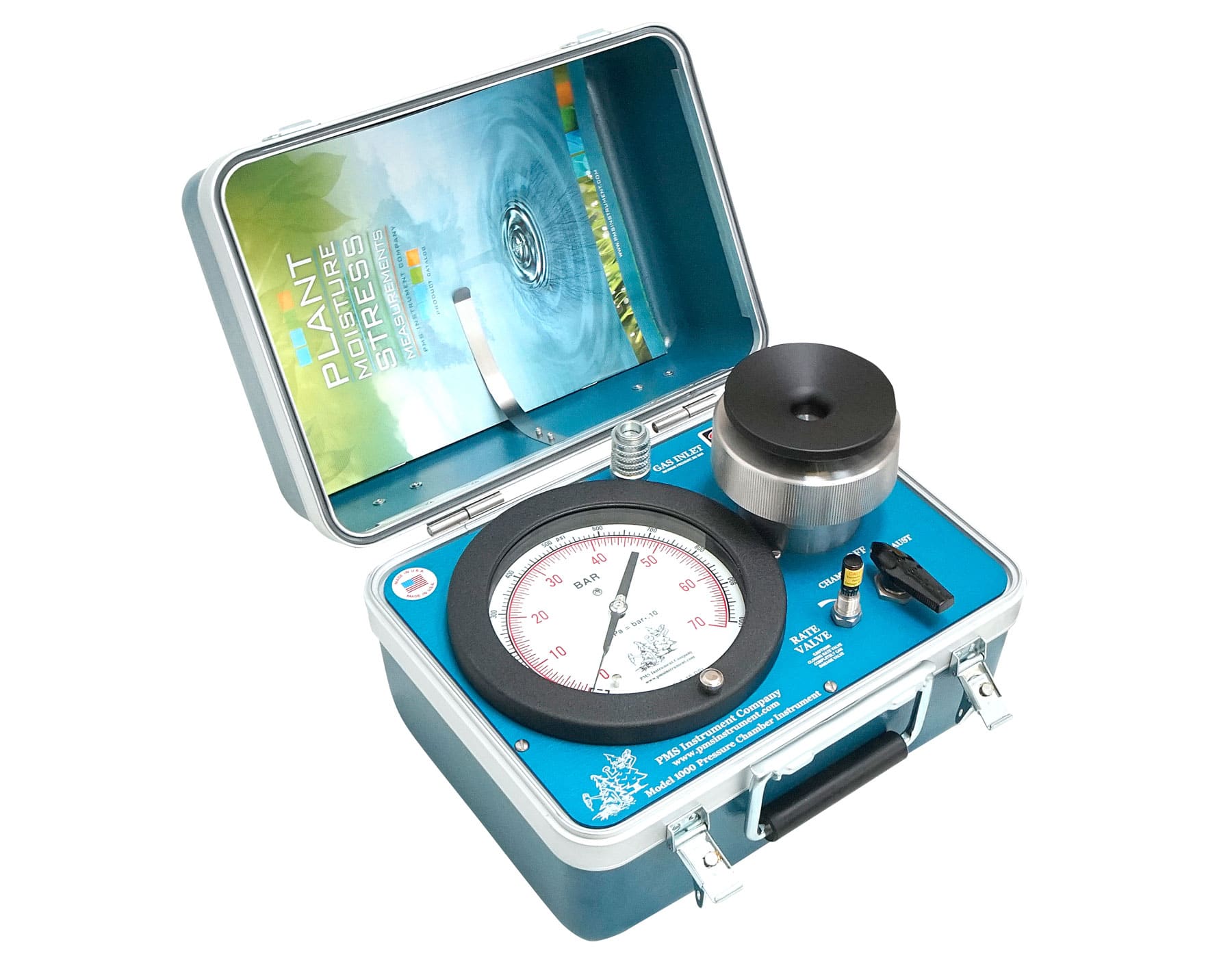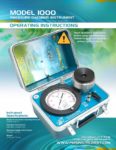 Important Safety Information
Important Safety Information
« Click Here

The Model 1000 Pressure Chamber Instrument is an old favorite we have built for over 50 years. The instrument can be connected directly to a Nitrogen Cylinder containing 207 Bar/3000 PSI pressure.
Instrument comes fitted with our most popular sealing gasket size – 1/4 inch Compression Gland Gasket and Insert. This gasket will seal a sample that is 1/4 inch in diameter down to a completely closed position. If you need other sealing options such as bladed grass or other semi-round sizes check our other options.
This is an excellent choice for research due to the large range of operating pressure. It is good for work on high stress level plants, pressure volume curves but can also be used for routine water measurements for crop plants.
The instrument requires a nitrogen source. You can use it in a lab or green house with a large cylinder or buy our light weight Portable Tank to allow for field work.
For more information about how the Pressure Chamber works or other questions, please check our Resources Page.
Model 1000 Specs
| Maximum Operating Pressure | 70 bar |
| Chamber Construction | Solid Stock Stainless Steel |
| Chamber Size | 2.5 inch inside diameter x 5.0 inch inside depth |
| Read-out | Bourdon Tube Gauge (Bar / PSI Scale) |
| Size (L x W x H) | 13 × 11 × 10 inches 33 × 28 × 24 centimeters |
| Weight | 20 Lbs / 9 Kg |
| Gauge | 6” Diameter Gauge |
| 0.5% accuracy | |
| 70 bar (7 Mpa) range |
Instrument comes complete with:
1/4 Inch Compression Gland Sealing System, 5 Extra 1/4 Compression Gland Gaskets, 6 foot Filling Hose, 1 – Solid Lab Stopper for instrument testing, O-Ring lubricant and Lithium Grease, 11/32 inch wrench and 3/32 inch Allen Key for Control Valve Adjustment, Safety Glasses and a color Operating Instruction Manual.
Recommended Accessories
- Portable Tank,
- Extra Compression Gland Gaskets,
- Volume Reducer– depending on plant type,
- Lighted Hand Lens or
- Instrument Mounted Eye Lens.
Note: Necessary accessories will depend upon users application.
Helpful Links
Filling the Portable Tank
What it should look like when it’s all hooked up

